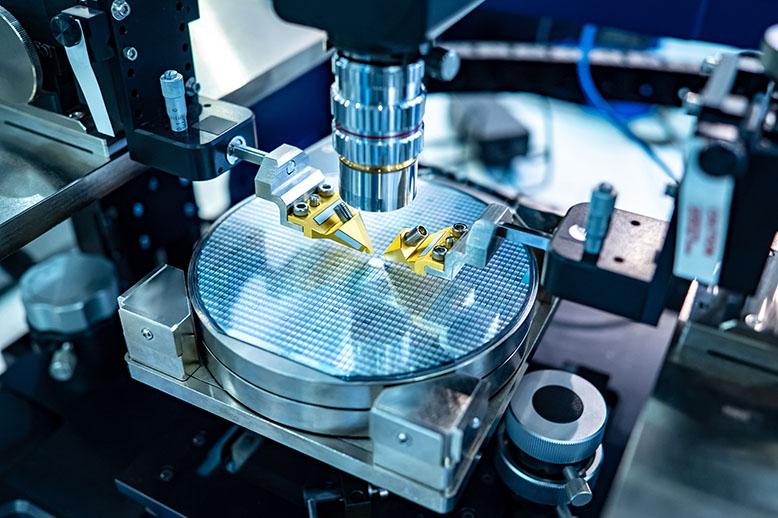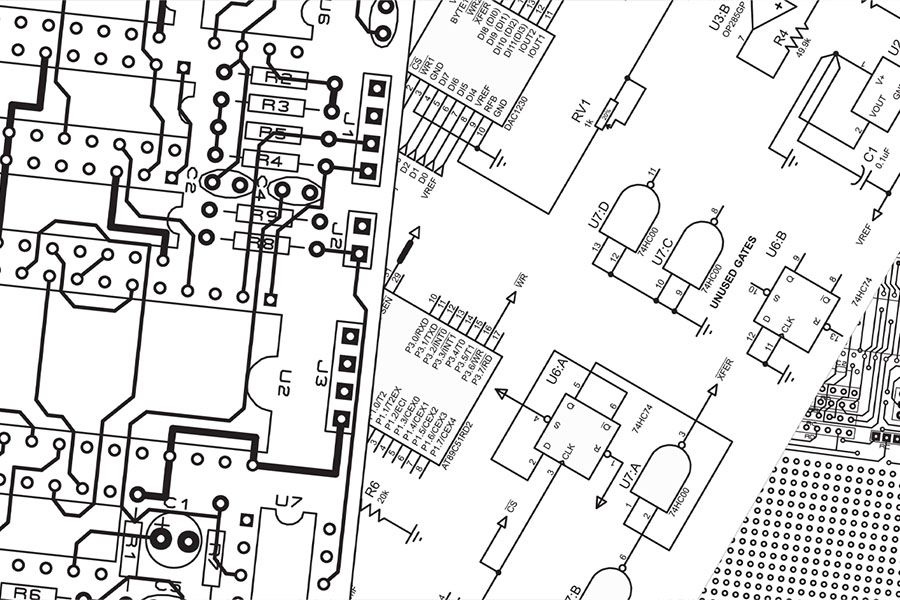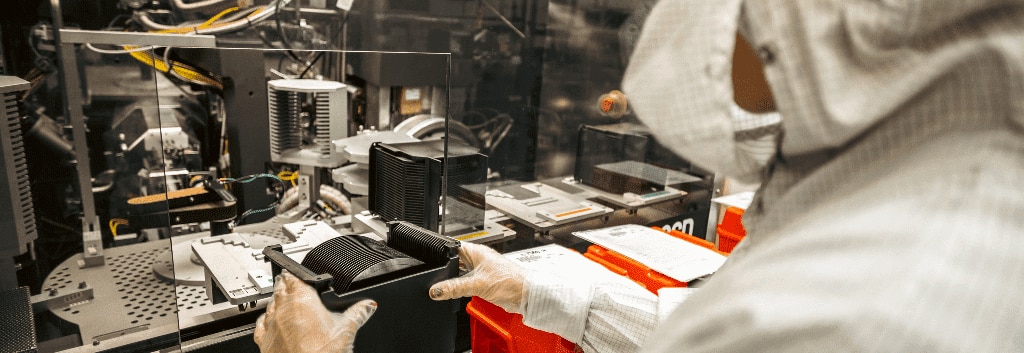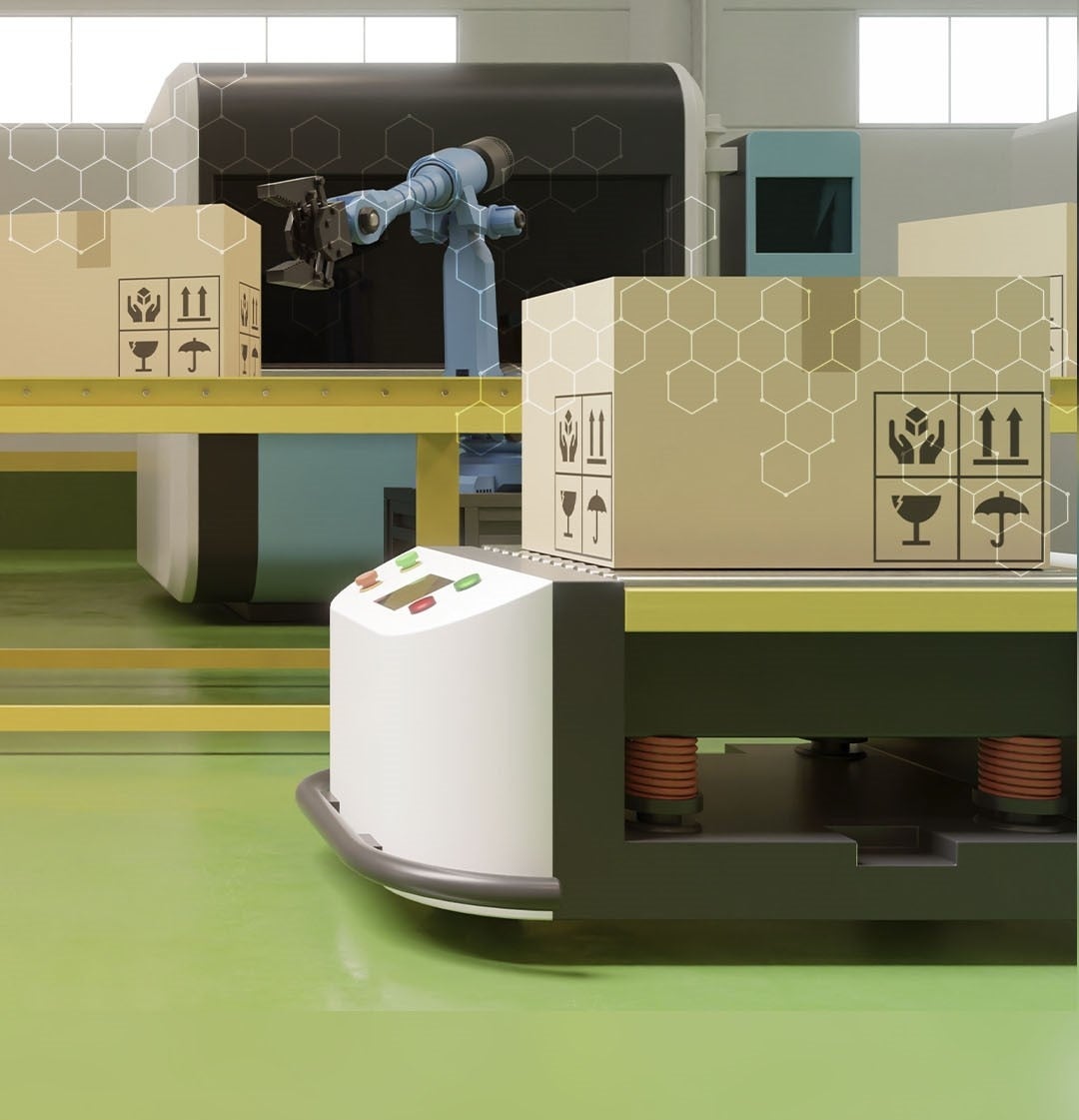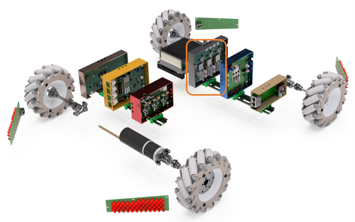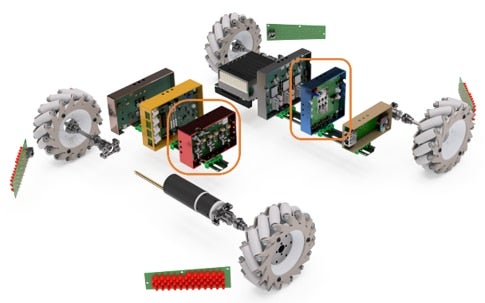Autonomous mobile robots (AMRs) are bringing many benefits to different sectors and industries, including improved safety and higher efficiency. However, to work safely and independently, these complex systems require careful integration of multiple technologies. The design stage is the most important when developing AMRs and largely determines how successful they will be. This blog details design considerations for two vital AMR components, power and motion control along with the appropriate solutions from onsemi.
Powering AMRs
The power system and supply components used in autonomous mobile robots are heavily influenced by their overall battery life and how long they can operate. Important performance characteristics and parameters to consider when designing the power supply system for an AMR include:
- Energy density
- Voltage and current requirements
- Efficiency
- Solution size
AMRs commonly use Lithium-ion batteries because they offer high energy density and long life. Simultaneously, power management units regulate power flow from the battery to other components. Voltage and current levels are controlled by switching converters and voltage regulators. Battery management systems in an AMR monitor the state, charge, temperature and current of a battery to ensure the AMR operates safely and efficiently, while the onboard battery charger’s specifications depend on the battery type, capacity, and voltage. Intelligent power modules provide high-power switching for the motor control system. Gate drivers accompany the power switches in IPMs to provide the appropriate signal to turn on and off the switches. Power factor correction (PFC) controllers enhance a power system’s overall efficiency. onsemi’s are ideal for AC-DC power supply applications such as a totem-pole PFC front end or an LLC resonant topology-based DC-DC stage. They are also ideal for high-voltage DC-DC power stages to deliver high efficiency and high-density fast battery charger designs in AMRs.
Motors Design for AMR Actuators
The choice of motor-driven actuators is critical in AMRs since they enable the arms and wheels of the machine to move. AMRs require high torque and speed actuators that offer high efficiency while being lightweight and compact. Actuator selection requires evaluating components like Brushless DC (BLDC) motors, motor controllers, MOSFETs, universal controller boards (UCB), and gate drivers.
BLDC motors offer several advantages over brushed motors. They are used in AMRs due to their high efficiency, low noise, and reliability (meaning they require less maintenance). However, controlling them requires complex algorithms and a suitable driver. Three-phase BLDC motors are widely used in robotics and industrial drives.
The function of a motor controller is to precisely control the motor in an AMR actuator. These devices can be fully integrated (with an embedded control algorithm); alternatively, a dedicated microcontroller unit (MCU) running a motor control algorithm can be used. Three-phase motors (common in AMRs) are driven by power transistors utilising a pulse width modulated (PWM) ON-OFF signal. These switches can be made from silicon or wide bandgap materials like silicon carbide (SiC) or gallium nitride (GaN). onsemi offers several BLDC motor control solutions, including the ECS640A ecoSpin™ motor controller UCB, the NCP81075 gate driver, and a power board, which can be used to accelerate AMR actuator development.
The UCB is a system-on-module (SoM) based on the Xilinx® Zynq®-7000 SoC and is ideal for precision applications and can also be used for advanced artificial intelligence (AI) functions. onsemi also offers shielded gate trench technology-based MOSFETs (from 30V to 150V) with package options including u8FL, SO8-FL, dual cool and top-sided cooling. New T10 technology-based 30-40V and 80V MOSFETs support low and medium voltage. T10 devices are divided into two categories for power conversion and motor control. T10M devices for motor control offer best in class on-state resistance, 10% improvement in UIS capability, and excellent body-diode softness for lower voltage spike and EMI issues. For 3-Phase BLDC motors in high-power applications, onsemi recommends PTNG technology-based MOSFETs (80 V, 100 V, 120 V, and 150 V), while the NTMTSC1D6N10MC, NTMTSC4D3N15MC, NTBLS1D5N10MC and NTBLS4D3N15MC MOSFETs meet the requirements of high-performance applications.
Finding the Right Partner for your Design
Power and motion control ultimately represent critical technologies for flexible and intelligent autonomous mobile robots. The choice of individual systems and components can significantly impact the performance and reliability of these advanced solutions over time. onsemi can fully support designers in the selection process, ensuring AMRs live up to their potential. To learn more AMRs download our whitepaper “Solutions and Considerations for Autonomous Mobile Robots.”
Watch our AMR video to learn more

